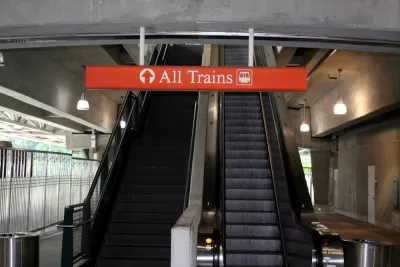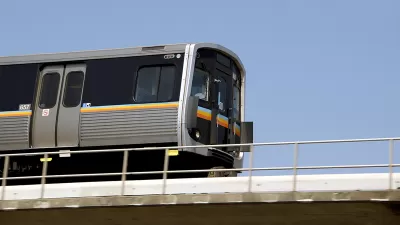Atlanta needs federal funding to make its light rail and bus service dreams a reality, but it already has $2.5 billion in sales tax revenue to work with.

Thomas Wheatley reports from Atlanta, where MARTA officials recently presented their vision for spending the $2.5 billion in funding approved by voters in 2016 through a .5 percent sales tax.
The largest investment in Atlanta transit since MARTA was built more than 40 years ago would add light rail, express buses to some of the city’s most congested corridors, and at least two “transit centers,” potentially shaping the development of the auto-oriented city for generations to come.
For more detail on the light rail portion of that vision, Wheatley adds:
According to a work session presentation obtained by Atlanta magazine, the MARTA tax funding would be spent on light rail lines along a portion of the segments of the Atlanta BeltLine in both southwest and northeast Atlanta. Light rail would also connect the Lindbergh station to Emory University, providing people another way to access the Clifton Corridor, one of the region’s largest job centers that is not near an interstate or currently served by rail transit. Two east-west light rail lines would also connect to the downtown streetcar, effectively linking the south and north segments of the BeltLine with transit. Finally, Greenbriar Mall in far southwest Atlanta would connect to MARTA’s Oakland City rail station via a light rail line.
The article includes maps of the proposed light rail lines, early details on proposed improvements to bus routes and the proposed transit centers, and one big glass of cold water: the vision described during the working session would require matching funds from the federal government.

Alabama: Trump Terminates Settlements for Black Communities Harmed By Raw Sewage
Trump deemed the landmark civil rights agreement “illegal DEI and environmental justice policy.”

Study: Maui’s Plan to Convert Vacation Rentals to Long-Term Housing Could Cause Nearly $1 Billion Economic Loss
The plan would reduce visitor accommodation by 25% resulting in 1,900 jobs lost.

Planetizen Federal Action Tracker
A weekly monitor of how Trump’s orders and actions are impacting planners and planning in America.

Waymo Gets Permission to Map SF’s Market Street
If allowed to operate on the traffic-restricted street, Waymo’s autonomous taxis would have a leg up over ride-hailing competitors — and counter the city’s efforts to grow bike and pedestrian on the thoroughfare.

Parklet Symposium Highlights the Success of Shared Spaces
Parklets got a boost during the Covid-19 pandemic, when the concept was translated to outdoor dining programs that offered restaurants a lifeline during the shutdown.

Federal Homelessness Agency Places Entire Staff on Leave
The U.S. Interagency Council on Homelessness is the only federal agency dedicated to preventing and ending homelessness.
Urban Design for Planners 1: Software Tools
This six-course series explores essential urban design concepts using open source software and equips planners with the tools they need to participate fully in the urban design process.
Planning for Universal Design
Learn the tools for implementing Universal Design in planning regulations.
Caltrans
Smith Gee Studio
Institute for Housing and Urban Development Studies (IHS)
City of Grandview
Harvard GSD Executive Education
Toledo-Lucas County Plan Commissions
Salt Lake City
NYU Wagner Graduate School of Public Service




























